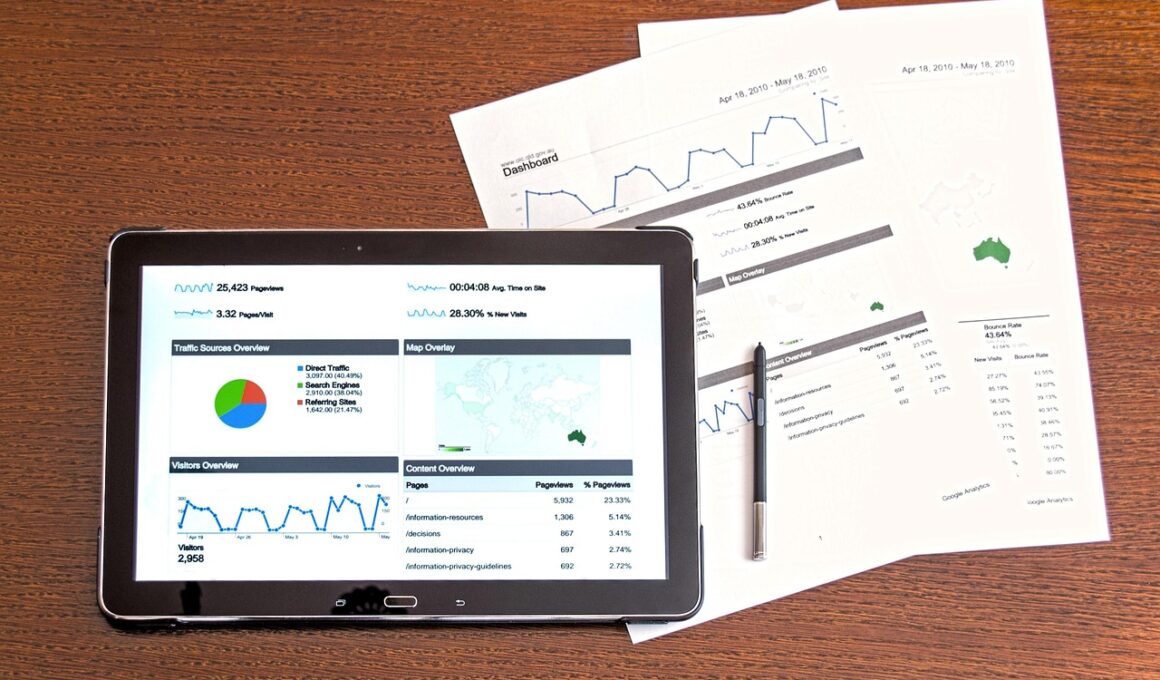Data Cleansing Techniques for Accurate Business Analytics
Data cleansing is a vital step in data management involving identifying and correcting errors or inconsistencies in data. Reliable analytics rely heavily on clean data. Businesses often face challenges such as outdated information, duplicate entries, or erroneous formats. Implementing effective data cleansing techniques can significantly improve the quality of analytics outputs. Techniques such as removing duplicates, standardizing formats, and validating data are essential in this cleansing process. Removing duplicates helps eliminate redundancy, ensuring that each data entry is unique. For standardization, organizations must decide on a consistent format for data entries across their systems. This simplifies reporting and analysis significantly. Validation checks ensure that the data conforms to predefined rules, thus enhancing overall accuracy. Data cleansing is not a one-time process; it should be ongoing, prompted by regular audits and validations. Teams should incorporate data quality metrics to measure and assess the impact of cleansing efforts. Ultimately, investing time and resources into effective data cleansing translates into better decision-making capabilities for businesses, making it a crucial aspect of data management practices. Staying proactive can save businesses from the pitfalls of poor-quality data.
Understanding Data Quality
Understanding data quality is imperative for effective business analytics. Poor data quality can lead to misguided decisions and incorrect projections, undermining business strategies. Key dimensions of data quality include accuracy, completeness, reliability, and relevancy. Accurate data reflects the true situation and provides reliable insights. Completeness ensures that all necessary information is available for analysis purposes. Reliability refers to the trustworthiness of data sources and their methods. Finally, relevancy ensures that data aligns with the specific objectives of the analysis. Organizations need to regularly assess these dimensions to maintain high standards of data quality. This can be achieved through regular checks and engagement with stakeholders to address any data-related concerns. It is also advisable to implement automated data quality tools where necessary to streamline these processes. By understanding and prioritizing data quality, organizations pave the way for more accurate analyses and informed decision-making. A focus on data quality fosters a culture of accountability, where data is seen as a strategic asset rather than just a byproduct of operational processes. Over time, this reinforces an organization’s ability to leverage analytics effectively for competitive advantage.
There are several common data cleansing techniques organizations can utilize to enhance data quality. First, data validation is essential for detecting anomalies or inconsistent entries within datasets. This involves employing algorithms or software to examine the data for conformity to set standards. Second, standardization addresses variations in data formats across various fields, ensuring uniformity. Third, deduplication is the process of identifying and merging duplicate records, preserving only the most relevant information. Fourth, data enrichment involves supplementing existing data with additional details from external sources to enhance depth. Implementing these techniques requires collaboration between data analysts, IT professionals, and other stakeholders to ensure successful outcomes. It is beneficial to establish a clear governance framework guiding data cleansing efforts to align with organizational objectives. Furthermore, documenting the processes involved in data cleansing can provide insights for future projects and establish best practices. Retaining a clean and comprehensive dataset can transform insights drawn from data, allowing for more effective predictive analytics. As businesses increasingly rely on data-driven strategies, adopting these techniques becomes essential for sustaining high data quality and leveraging analytics effectively.
Tools and Technologies for Data Cleansing
Utilizing the right tools and technologies is essential for efficient data cleansing in any business analytics environment. Numerous data cleansing software solutions are designed to automate these processes, making it easier to maintain high data quality. Examples include Trifacta, Talend, and OpenRefine, which offer functionalities to detect errors, validate data formats, and standardize entries, facilitating the entire cleansing process. Moreover, data integration tools such as Informatica or Microsoft SQL Server Integration Services (SSIS) can assist in merging data from disparate sources while ensuring its integrity and consistency. Implementing appropriate software not only minimizes manual efforts but also reduces the possibility of human error, which is common in manual processes. Organizations should invest in training their staff on the best ways to utilize these tools, maximizing their efficiency and effectiveness. Additionally, incorporating machine learning algorithms can help identify patterns and predict future anomalies in data collection. With technology evolving, staying updated on the latest advancements in data cleansing tools is vital for sustaining competitive analytics capabilities and ensuring continuous improvement in data management practices.
Establishing a consistent data cleansing strategy is crucial for maintaining ongoing data quality. Organizations should develop a structured approach that involves regular data audits and cleansing routines based on predefined schedules. These routines should encompass basic techniques like validation, manual reviews, and automated processes for larger datasets. Moreover, organizations must foster a data-centric culture where employees at all levels recognize the importance of data integrity. Training programs that highlight the significance of accurate data management can help instill this mindset. Engaging employees in cleansing efforts can contribute to more comprehensive insights and ownership of data quality. However, it’s equally important to designate a data governance team responsible for overseeing data cleansing strategies, ensuring resources are effectively allocated. This team can help develop policies and standards to guide housekeeping processes related to data. By integrating data cleansing into everyday operations, companies can continuously monitor and address issues as they arise, rather than waiting for a complete audit. This proactive approach is essential for fostering an environment of quality and accountability around data management.
The Role of Data Governance in Cleansing
Data governance plays a pivotal role in effective data cleansing within organizations. It comprises the framework needed to ensure high data quality through clearly defined policies, processes, and standards. This governance framework is vital for guiding the activities around data management specifically regarding cleansing practices. Organizations need to establish a data governance team that collaborates cross-functionally, ensuring all departments understand their roles in data quality. With a well-defined data governance strategy, stakeholders can acknowledge their responsibility in maintaining data integrity, thereby facilitating better data cleansing results. This collaborative approach cultivates an environment where cleansing is no longer seen as a separate task but integrated into daily operations. Furthermore, adopting standardized procedures for data entry and storage can significantly reduce erroneous entries, thereby improving ongoing data accuracy. Regular training and communication regarding compliance with data governance policies are essential for reinforcing understanding within teams. Moreover, organizations must implement oversight mechanisms to monitor compliance and the effectiveness of data cleansing practices over time. By aligning data governance objectives with cleansing techniques, organizations will achieve sustainable improvements in data quality, enhancing their analytics capabilities.
The long-term benefits of effective data cleansing practices extend well beyond immediate data quality improvements. Organizations that prioritize data cleansing are better positioned to leverage advanced analytics and business intelligence (BI) tools efficiently. With clean data, it becomes easier to derive actionable insights that inform strategic decisions across all business units. Clean data reduces the likelihood of encountering errors during analyses and improves the accuracy of predictive models. As a result, businesses can go beyond traditional reporting methods, integrating real-time analytics into their operations. This shift enables quicker decision-making processes, allowing organizations to adapt rapidly to market changes. Additionally, clean data encourages a competitive advantage by empowering companies to tailor their offerings based on accurate insights about customer behavior and market trends. Furthermore, investing in data cleansing fosters trust amongst stakeholders as reliable data translates into informed decisions. Over time, the process leads to improved customer satisfaction as it ensures that communications are relevant and responsive to customer needs. As businesses commit to ongoing data cleansing efforts, they secure themselves against the risks associated with poor-quality data, ultimately driving growth and success in an increasingly data-driven world.


